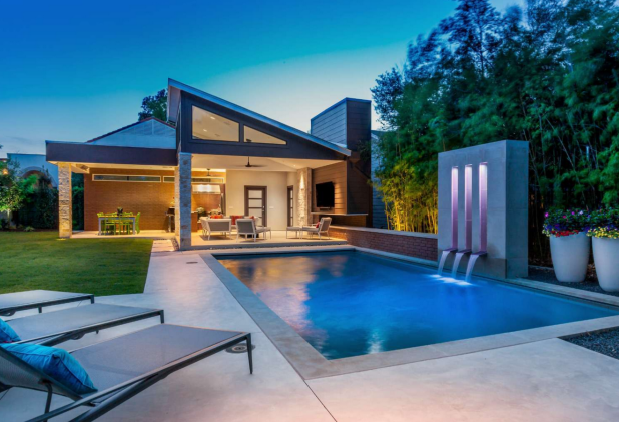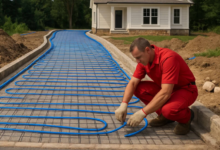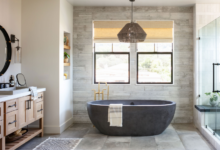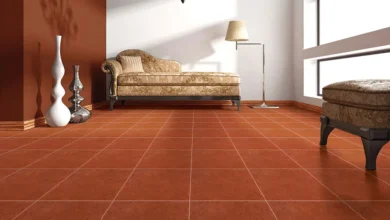Transform Your Home: How To Set A Realistic Budget For Home Remodeling

Home remodeling is an exciting opportunity to transform your space, making it more functional, stylish, and suited to your current lifestyle. However, establishing a realistic budget is one of the most critical elements of a successful remodeling project.
Without proper planning, costs can spiral out of control, turning what should be a rewarding experience into a financial headache. Here’s a guide to help you set a realistic budget for your home remodeling project.
Understand Your Remodeling Goals
Before diving into numbers, take a moment to clarify your remodeling goals. Are you looking to increase your home’s value, enhance functionality, or simply update the aesthetics? Define your primary objectives and the specific areas you wish to remodel.
This clarity will guide your budget, helping you differentiate between essential upgrades and optional enhancements.
Consider the scale of your project. A minor kitchen update will require a different budget than a full home addition. Write down your goals and prioritize them. This will help you budget and stay focused during the remodeling process.
Research and Gather Estimates
Once you clearly understand your goals, it’s time to research the costs associated with your planned renovations. Start by gathering estimates from contractors, suppliers, and other professionals. Utilize online resources, such as home improvement websites, to get a sense of pricing in your area.
Don’t hesitate to contact multiple contractors for quotes. This will give you a broader perspective on the costs involved and help you avoid overpaying. Remember, the cheapest option isn’t always the best; consider the contractor’s reputation, experience, and past work alongside their pricing.
Factor in Hidden Costs
One of the biggest pitfalls in home remodeling is underestimating hidden costs. It’s essential to account for expenses that may not be immediately apparent.
For example, permits, inspections, and unexpected repairs can quickly add up. Older homes may often present unforeseen challenges, such as outdated plumbing or electrical issues, which can significantly impact your budget.
A general rule of thumb is setting aside an additional 10-20% of your budget for unexpected costs. This cushion will provide peace of mind and prevent financial strain if surprises arise during remodeling.
Create a Detailed Budget Breakdown
With a clearer understanding of your goals and potential costs, it’s time to create a detailed budget breakdown. Start by listing each component of the project, such as materials, labor, and permits. Be specific about the items you need, from tiles and fixtures to paint and cabinetry.
Categorize your expenses into must-haves and nice-to-haves. This will allow you to prioritize spending and make informed decisions about trimming costs later.
Read also: The many benefits afforded to a home that installs a water filtration system
Explore Financing Options
Depending on the scope of your remodeling project, you may need to explore financing options. However, it is crucial to weigh the pros and cons of each financing method. Look for options with low interest rates and favorable terms to minimize the long-term financial impact.
Additionally, consider your current financial situation and how much you can comfortably afford to borrow. A well-planned budget should fit within your financial means without leading to unnecessary debt.
DIY vs. Hiring Professionals
Deciding whether to tackle the project yourself or hire professionals can significantly influence your budget. While DIY projects can save money, they require time, skills, and effort.
Assess your capabilities honestly. If you lack experience in certain areas, hiring a professional might be more cost-effective to avoid costly mistakes.
Consider handling smaller tasks—like painting or landscaping—yourself. However, hiring a licensed contractor is often the safest and most reliable option for complex projects, such as electrical work or structural changes.
Monitor Your Spending
As your remodeling project progresses, monitoring your spending closely is essential. Regularly track your expenses and compare them with your budget to stay on top of spending.
This will help you spot any areas where costs are exceeding your plan and make the necessary adjustments to keep the project on track.
Utilizing budgeting software or a simple spreadsheet can make tracking your expenses more manageable. Set up a system to categorize and review your spending weekly to stay on top of your budget.
Be Flexible and Adaptable
Finally, it’s important to remain flexible throughout the remodeling process. While having a budget is beneficial, unexpected circumstances can arise. Whether it’s a delay in materials or a sudden need for repairs, being adaptable will help you navigate these challenges without added stress.
If you find that certain aspects of your project are costing more than anticipated, evaluate your priorities and consider making adjustments. Perhaps you can scale back on less critical elements to ensure that the essential aspects of your remodel stay within budget.
Conclusion
Setting a realistic budget for your home remodeling project can make the difference between a smooth, successful transformation and a financial disaster. By defining your goals, researching costs, seeking professional estimates, and allowing for contingencies, you can create a plan that balances your vision with your financial reality.
Partner with Modern Remodeling, San Diego’s premier construction company.
With over 15 years in the industry, we excel in transforming homes through expert kitchen and bathroom renovations, expanding spaces with seamless room addition, and delivering comprehensive home makeovers tailored to your needs.
Contact us today for a free estimate and take the first step toward creating the home you’ve always envisioned.





